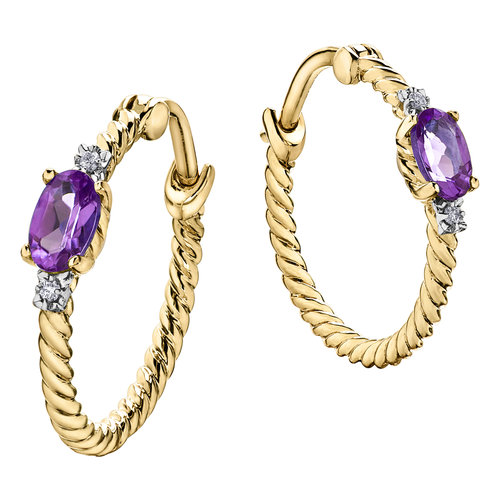June is one of only two months that has three birthstones associated with it, giving the lucky people born in June a choice of gemstones between pearl, alexandrite and moonstone. June’s birthstones range from creamy-colored opalescent pearl and moonstone to the rare color-changing alexandrite—one of the most valuable gems on earth. With this spectrum of price points and color options, people with June birthdays can choose a beautiful gemstone to fit any mood or budget.
PEARL
Pearls are the only gemstones made by living creatures. Mollusks produce pearls by depositing layers of calcium carbonate around microscopic irritants that get lodged in their shells—usually not a grain of sand, as commonly believed.
While any shelled mollusk can technically make a pearl, only two groups of bivalve mollusks (or clams) use mother-of-pearl to create the iridescent “nacreous” pearls that are valued in jewelry. These rare gems don’t require any polishing to reveal their natural luster.
Appropriately, the name “pearl” comes from the Old French perle, from the Latin perna meaning “leg,” referencing the leg-of-mutton shape of an open mollusk shell. Because perfectly round, smooth natural pearls are so uncommon, the word “pearl” can refer to anything rare and valuable.
ALEXANDRITE
A relatively modern gem, alexandrite was discovered in Russian emerald mines located in the Ural Mountains. Legends claim that it was discovered in 1834 on the same day that future Russian Czar Alexander II came of age, hence the name honoring him. Because this unique gemstone changed colors from green to red—the national colors of Russia—alexandrite became Imperial Russia’s official gemstone. Often described as “emerald by day, ruby by night,” alexandrite is a rare variety of the mineral chrysoberyl that changes color from bluish green in daylight to purplish red under incandescent light. This chameleon-like behavior is the result of its uncommon chemical composition— which includes traces of chromium, the same coloring agent found in emerald. The unlikelihood of these elements combining under the right conditions makes alexandrite one of the rarest, costliest gems. The alexandrite mined from Russia’s famed deposits set the quality standard for this stone. Today, most alexandrite comes from Sri Lanka, Brazil and East Africa—generally paling in comparison to the vivid colors of Russian gems.
With a hardness of 8.5 on the Mohs scale, alexandrite is softer than sapphire and harder than garnet—the other gemstones that can change color. However, due to its scarcity, alexandrite is more valuable than most gems, even rubies and diamonds. Associated with concentration and learning, alexandrite is believed to strengthen intuition, aid creativity and inspire imagination—bringing good omens to anyone who wears it.
MOONSTONE
June’s third birthstone, moonstone, was named by the Roman natural historian Pliny, who wrote that moonstone’s shimmery appearance shifted with the phases of the moon. The most common moonstone comes from the mineral adularia, named for an early mining site near Mt. Adular in Switzerland that supplied this gem. This site also birthed the term adularescence, which refers to the stone’s milky glow, like moonlight floating on water.
Moonstone is composed of microscopic layers of feldspar that scatter light to cause this billowy effect of adularescence. Thinner layers produce a bluish sheen and thicker layers look white. Moonstone comes in a range of colors spanning yellow, gray, green, blue, peach and pink—sometimes displaying a star or cat’s eye.
The finest classical moonstones—colorlessly transparent with a blue shimmer—come from Sri Lanka. Since these sources of high-quality blue moonstones have essentially been mined out, prices have risen sharply.Moonstones are also found in India, Australia, Myanmar, Madagascar and the United States. Indian gemstones—which are brown, green or orange in color—are more abundant and affordably priced than their classical blue counterparts.
This beautiful gemstone’s weakness is its relatively low hardness of 6 on the Mohs scale, making it prone to stress cracking and cleaving. Care is required with moonstone jewelry like rings or bracelets; brooches and pendants are preferred.
As its name implies, moonstone is closely associated with lunar mystery and magic. Its calming, balancing energies can supposedly attune to natural biological rhythms. Moonstone acts as the ultimate fertility crystal by sparking passion in new lovers and reuniting old ones.
Also known as the Traveler’s Stone, it’s believed to protect travelers at night. Moonstone is used to treat insomnia and sleepwalking, encourage sound sleep and create beneficial dreams.
JULY BIRTHSTONE



























